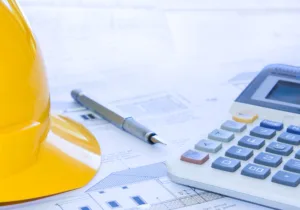In the multifaceted realm of construction, there’s a saying that rings more authentic than most: “Fail to plan, and you plan to fail.” While the importance of architectural designs and engineering principles is undeniable, a project’s financial roadmap—the cost plan—is arguably the linchpin of its success. So, what exactly is cost planning in construction? Simply put, it’s a strategic blueprint that details how finances will be allocated and spent throughout the project’s duration, ensuring that every brick laid and every hour worked falls within a predetermined budget.
This article aims to shed light on the intricate world of cost planning. We will delve deep into its definition, explore the different types of cost plans, and understand their paramount importance in the lifecycle of construction projects. Beyond the theoretical, we will also guide you through the practical steps of cost planning, from the developing pre-construction phase to the dynamic demands of monitoring and controlling expenses during construction.
By the end of this read, you’ll grasp the significance of meticulous cost planning and be equipped with best practices to master this crucial element in construction management. So, whether you’re an industry novice or a seasoned professional looking for a refresher, this guide promises valuable insights for all. Let’s dive in!
Table of Contents
Understanding Cost Plans in Construction

In the bustling corridors of construction management, amidst the din of hammers and drills, emerges a silent force driving every decision and move: the cost plan. At its core, a cost plan is a meticulous financial framework detailing every expenditure associated with a construction project. Think of it as the project’s financial compass, steering every brick, beam, and bulldozer toward the desired financial destination.
Definition of Cost Plans:
Diving deep into the vibrant realm of construction, amidst the swirling blueprints and the hum of machinery, there lies the unsung hero of every successful project: the cost plan. A crucial step in the early stages of developing a cost plan is the accurate cost estimate, which helps in accurately estimating project costs from the earliest stages of project initiation, considering various project development factors to enhance the precision of estimates and prevent cost surprises later in the project. To the untrained eye, it might seem like just another document, but in the hands of a seasoned professional, it’s a treasure map guiding a project to its golden finish.
What are cost plans?
Imagine setting off on a cross-country road trip without a map or GPS. The journey would be rife with wrong turns, unexpected detours, and perhaps even a few dead-ends. In the construction world, the cost plan is that essential map. In its essence, a cost plan is a detailed financial outline that provides comprehensive forecasts of all expected expenditures throughout a construction project, including estimated costs for materials, labor, equipment, and overhead expenses. From the initial soil tests to the final paint coat, this document ensures that every penny spent has its place and purpose.
How they fit into the construction project life cycle?
Think of the project lifecycle of a butterfly—from a humble egg to a vibrant butterfly, transforming each stage. Similarly, cost plans are not static. They commence as broad strokes, mere sketches of potential expenses during the project’s infancy. As the project takes shape, these plans evolve, getting more detailed and refined, providing more precise financial direction as the construction progresses throughout the project lifecycle.
A well-crafted cost plan doesn’t just tell you where your money is going—it illuminates why. It acts as both a safeguard and a strategy, ensuring that resources are spent wisely and that the project’s financial health remains robust from start to finish. So, as we forge ahead in understanding the intricate tapestry of construction projects, it’s worth remembering the value of this crucial financial guidebook and the stability it brings to the entire endeavor, emphasizing the need for continuous refinement of cost plans throughout the project lifecycle.
Types of Cost Plans:
Let’s take a moment and think about the myriad of tools a master chef uses in a kitchen. Each has a specific purpose, from paring knives to pestles, aiding the chef in crafting a culinary masterpiece. Similarly, different types of project cost plans serve distinct meanings in the dynamic kitchen of construction management. And just as a chef picks a tool based on the prepared dish, construction experts choose a cost plan that aligns with the project’s phase and intricacy. Let’s unravel these types, shall we?
1. Elemental Cost Plans
Picture a giant puzzle where each piece represents a foundational element of a building—the roof, the walls, the foundation, and so forth. In an elemental cost plan, costs are estimated for each component. Ideal for the early stages when the whole picture (or complete design) isn’t entirely in place, it gives a bird’s-eye view of the potential financial landscape, helping stakeholders get a feel for the project’s feasibility. Accurately estimating material and labor costs is crucial in these plans to ensure a comprehensive understanding of the project’s financial requirements.
2. Comparative Cost Plans
Have you ever heard the phrase, “standing on the shoulders of giants”? In a comparative cost plan, past projects take center stage. By analyzing similar past constructions, professionals extrapolate costs for the current venture, adjusting for scale, materials, and location differences. It’s a method based on experience and a rich database of prior projects. At the same time, it offers speed, and its precision hinges on the accuracy of past data and the project’s comparability.
3. Detailed Cost Plans
If the elemental plan is a broad brushstroke, the detailed cost plan is where fine-tuning occurs. Here, every tiny aspect of the project is dissected, every nail accounted for, every hour of labor factored in, and all overhead expenses are thoroughly analyzed. Typically reserved for the later stages when the project’s designs and specifications are set in stone (or blueprint), this method provides an exhaustive financial overview, including materials, labor, equipment, and overhead expenses, leaving no stone unturned.
As we journey through the construction process, picking the right type of cost plan is akin to choosing the right tool for the job. Each brings flavor, insights, and depth, ensuring that every financial decision is well-informed and strategically sound. So, as we continue to delve deeper into the world of cost planning, remember that, like our chef, knowing when and how to use each “tool” can be the difference between a good project and a great one.
The Significance of Cost Plans in Construction Projects:
Ah, the beauty of a well-orchestrated symphony! Every note, every pause, every crescendo is meticulously planned to create a harmonious melody that captivates the audience. Similarly, in the grand performance of a construction project, the cost plan is akin to a conductor’s score. It doesn’t just chronicle the flow of funds; it dictates the rhythm, ensuring every move aligns with the project’s financial symphony. Let’s delve into why these plans are so pivotal. Cost plans help in defining the ‘overall project cost’ and its allocation across different project stages, serving as a crucial tool for budget management and financial oversight.
1. Anchoring Financial Management
Navigating the financial waters of a construction project without a cost plan is akin to sailing a ship without a compass—directionless and risky. A cost plan anchors the financial journey, providing clear markers and benchmarks. It delineates where the money will be spent and ensures that any expenditure is purposeful, justified, and aligned with the overarching financial strategy. Regularly updating the cost plan to reflect actual costs is crucial, as it allows for comparing them with planned expenses, ensuring the project remains on track and within budget, minimizing the risk of cost overruns and delays.
2. Guiding Feasibility and Decision-making
Before the first brick is laid or the first blueprint drafted, the cost plan whispers in the ears of stakeholders, answering a crucial question: “Is this project financially viable?” It evaluates the economic feasibility, ensuring that dreams and designs do not overshoot financial realities. By doing so, it becomes a pivotal tool for decision-making, advising on whether to proceed, pivot, or pause.
3. Shaping Design and Implementation
Here’s a fascinating dance between design and finance. Understanding and defining the project scope is crucial as it shapes design decisions within the cost planning framework, ensuring alignment with the project’s objectives and budgetary constraints. While the vision of architects and designers paints the project’s aesthetics, the cost plan ensures this vision fits the budgetary frame. It influences choices—whether it’s the type of materials used, the construction techniques employed, or even design alterations—all to ensure the final masterpiece is both beautiful and budget-friendly.
4. Building Stakeholder Confidence
Trust. It’s a cornerstone in any venture, especially in construction, where investments are hefty. A well-crafted and meticulously followed cost plan is a testament to the project’s financial integrity. It assures stakeholders—investors, contractors, or clients—that their funds are being managed responsibly, building a foundation of trust beyond bricks and mortar.
In the grand tapestry of construction, cost plans might not always take center stage, but their influence is undeniably profound. They’re not just financial ledgers but strategic blueprints, ensuring the project’s harmony from the financial prelude to the final encore. As we proceed, keep this in mind: a project without a cost plan is like a symphony without a conductor—full of potential but at risk of missing its true melody.
The Journey of Cost Planning in a Construction Project

Every incredible journey has its tales of trials, triumphs, and learning. The voyage of cost planning in a construction project is no different. The story starts with an idea, a dream sketched on paper, and culminates in majestic towers that testify to human ingenuity and careful planning. So, let’s embark on this fascinating expedition, retracing the steps of cost planning through the lifecycle of a construction project.
Pre-construction Cost Planning: Laying the Groundwork:
You’ve probably heard the saying, “Well begun is half done.” This ancient wisdom rings especially true in the realm of construction. Before the din of machines comes to life, before the first brick is laid, there’s a silent phase, often behind closed doors and atop conference tables, where the project’s financial heartbeat begins to take form. Welcome to the world of pre-construction cost planning. In this crucial phase, cost estimates play a pivotal role in laying the groundwork for comprehensive financial planning, even when design plans and specifications are still taking shape.
1. The Visionary Blueprint
Much like an artist visualizing a masterpiece before the brush meets canvas, pre-construction cost planning is about imagining the financial landscape of the project. At this stage, it’s not about exact numbers (those come later) but broad strokes. What’s the scale of the project? What materials might we use? What are the potential financial challenges? These preliminary questions form the framework for our economic blueprint.
2. Harnessing Historical Data
Looking back often provides clarity for the journey ahead. Previous projects act as treasure troves of data, offering insights into potential costs and pitfalls. This backward glance and adjustments for current market trends pave the way for more accurate and informed estimations.
3. Tools, Tech, and Techniques
No sailor sets out to sea without a compass, and in the digital age of construction, technology is that compass. From sophisticated software that predicts material costs to platforms that track labor rates in real-time, technology plays a pivotal role in refining and enhancing pre-construction cost predictions.
4. Building a Tentative Budgetary Framework
With all this data and insight, a preliminary project budget begins to take shape. Think of it as a skeleton, providing structure but awaiting fleshing out. This tentative budget sets the tone, offering a glimpse into the project’s financial feasibility and becoming a reference point for all subsequent decisions.
In essence, pre-construction cost planning is akin to charting out a map for an upcoming adventure. It’s about anticipating challenges, equipping oneself with the right tools, and setting a course that ensures not just the completion of the journey but its success. As we delve deeper into the intricacies of cost planning, always remember the significance of this initial phase—the bedrock upon which the entire financial tower of the project is built. So, let’s ensure we lay this foundation with care, foresight, and precision.
Crafting a Comprehensive Cost Plan: Beyond the Drawing Board
Imagine being handed a beautiful, intricate jigsaw puzzle. The box displays a stunning picture, but many pieces await assembly inside. Crafting a comprehensive cost plan is like piecing together this puzzle, ensuring each financial fragment finds its rightful place, ultimately revealing a coherent, cohesive financial portrait. Let’s roll up our sleeves and delve into the art of piecing together this master plan.
1. Detailed Estimations
With the foundational framework in the pre-construction phase, it’s time to zoom in. Every brick, every beam, every drop of paint needs its price tag. Employing a combination of market research, supplier quotations, and labor rate analyses, the cost plan becomes a detailed catalog of expected expenses, ensuring minimal surprises as construction progresses.
2. Contingencies and Cushions
In the dynamic dance of construction, unexpected twists and turns are almost a given. Whether it’s unforeseen site conditions or sudden material price hikes, a well-crafted cost plan leaves room for contingencies. The project remains financially nimble and adaptive by setting aside a designated portion of the budget for these unexpected expenses.
3. Scheduled Cost Breakdown
A project’s journey isn’t linear—it evolves, phase by phase. A comprehensive cost plan recognizes this evolution and breaks down expenses chronologically. This timeline-oriented approach helps in forecasting cash flows, planning procurement schedules, and setting financial milestones for the project.
4. Feedback Loops and Iterations
The first draft of any masterpiece is rarely its final form. As the project unfolds, real-world data will invariably differ from projections. This is where regular reviews come in. By constantly comparing actual expenses with planned ones and adjusting the plan accordingly, the cost plan remains a living, breathing document, always in tune with the project’s heartbeat.
5. Inclusion of Stakeholder Input
A project isn’t an island; it’s a collective endeavor. Whether it’s insights from a seasoned architect about material alternatives or feedback from a site supervisor about labor dynamics, stakeholder input is invaluable. Ensuring their perspectives shape the cost plan greatly enhances its accuracy and efficacy.
Crafting a comprehensive cost plan is more than just number-crunching. It’s a meticulous, thoughtful process, merging data with intuition, strategy with adaptability. As we journey further into the intricate world of construction, always remember that this cost plan isn’t just a financial document—it’s the lighthouse guiding the project safely to its destined shores. With careful planning, keen oversight, and regular refinement, the path becomes more apparent, leading us confidently toward successful project completion.
Monitoring and Managing Costs during Construction: Steering the Ship in Stormy Seas
Picture this: a seasoned captain at the helm of a grand ship, eyes fixed on the horizon, hands adjusting the wheel as waves ebb and flow. The journey of construction isn’t much different. With the cost plan as the charted course, the real challenge often lies in steering the project through the unpredictable currents of reality. Let’s dive into the nuances of monitoring and managing project costs as the construction story unfolds.
1. Regular Check-ins and Audits
Think of these as pit stops in a race. Periodically, it’s essential to pause, assess, and recalibrate. By regularly comparing the actual expenses with the estimates, any deviations are caught early, allowing for timely interventions. These weekly, bi-weekly, or monthly check-ins ensure that the project stays financially on track.
2. Embrace Technology
In today’s digital age, there’s an app or software for almost everything—including construction cost management. From real-time expense tracking to predictive analytics that can forecast potential cost overruns beforehand, technology is a game-changer. It streamlines monitoring and provides insights that might escape even the keenest human eye.
3. Fluid Communication Channels
A construction site is a beehive of activity. For effective cost management, the buzz of information must flow seamlessly. Whether it’s a contractor flagging a sudden material shortage or a site manager highlighting a labor issue, open communication channels ensure that cost-impacting information is shared promptly and addressed swiftly.
4. Risk Management Strategies
Despite the best plans, surprises are par for the construction course. What sets successful projects apart is not the absence of challenges but robust risk management strategies. By identifying the potential risks and pitfalls in advance and having contingency plans, the project remains resilient despite unforeseen expenses.
5. Value Engineering
Sometimes, the initially charted path might not be the most efficient. As construction progresses, opportunities for cost savings or optimizations—without compromising quality—might arise. This could be in the form of alternative materials, construction techniques, or design tweaks. Embracing such changes can lead to better resource utilization and enhanced value for money.
6. Stakeholder Engagement
Remember, the journey isn’t a solo endeavor. Keeping stakeholders, from investors to subcontractors, in the loop regarding cost performance fosters a collaborative atmosphere. Their insights, feedback, and proactive involvement can be pivotal in navigating financial challenges.
Monitoring and managing costs during construction is an intricate dance of vigilance, adaptability, and collaboration. It’s about steering the ship with a steady hand, adjusting the sails as winds change, and ensuring that, come what may, the destination is reached without compromising the project’s financial health. In the orchestra of construction, this phase is the crescendo—challenging, intense, but with the promise of a harmonious finale if navigated with skill and foresight.
Best Practices for Successful Cost Planning: Navigating with Finesse and Precision
Ah, the age-old quest for mastery! Best practices exist in every field, from culinary arts to space exploration – the distilled wisdom of ages and experiences. Regarding cost planning in construction, these best practices are akin to a seasoned traveler’s advice, offering shortcuts, insights, and ways to avoid the proverbial potholes. Let’s unpack the suitcase of wisdom and explore these golden nuggets.
1. Begin with Rigorous Research
A cost plan built on a foundation of thorough research is like a house set on solid ground. Dive deep into market trends, analyze historical data from similar projects, and seek expert opinions. The more information you gather, the more robust and reliable your cost plan becomes.
2. Foster a Collaborative Environment
The magic often happens at the intersection of diverse perspectives. Encourage an environment where architects, contractors, suppliers, and other stakeholders contribute actively to the cost-planning process. Their collective expertise enriches the plan, making it holistic and well-rounded.
3. Continual Learning and Adaptation
The world of construction, like any other, is in constant flux. Be open to learning from each project, adapting and refining your strategies based on real-world outcomes. This iterative approach ensures that your cost-planning methodologies evolve and improve over time.
4. Prioritize Transparency
A transparent cost plan is a trusted cost plan. Ensure that every planning aspect, from material costs to labor projections, is clear, well-documented, and readily accessible to all stakeholders. This not only builds confidence but facilitates smoother communication and collaboration.
5. Engage in Periodic Training
The tools, technologies, and construction and cost-planning techniques are ever-evolving. Regular training sessions ensure your team stays updated, harnessing the latest advancements to optimize the cost-planning process.
6. Set Clear Milestones and Benchmarks
Breaking down the cost plan into clear milestones offers a roadmap for tracking and evaluation. These benchmarks act as financial checkpoints, ensuring the project remains aligned with the overarching financial strategy at every phase.
7. Embrace Flexibility
While meticulous planning is paramount, rigidity can be a stumbling block. Understand that adjustments might be needed as the project progresses. A flexible cost plan, which can adapt to unforeseen challenges while staying true to its core objectives, is often the hallmark of a successful project.
In the dynamic tapestry of construction, cost planning stands out as both an art and a science. It’s about blending data with intuition, foresight with adaptability. And as with any craft, mastery lies in the details and the dedication to constantly better one’s approach. With these best practices in your toolkit, the path to successful cost planning becomes clearer, leading your projects to financial efficiency and success. Remember, in the grand scheme of construction, a well-planned penny not only saves a pound but paves the way for projects that stand tall and proud structurally and financially.
Conclusion: Piecing Together the Cost Planning Puzzle
As we wrap up our deep dive into the intricacies of cost planning in construction, it’s akin to stepping back and gazing at a completed jigsaw puzzle. Each piece, from understanding the importance of cost plans to adopting best practices, contributes to a holistic picture, rich in detail and coherence.
Cost planning isn’t just about crunching numbers or staying within budget. It’s about weaving a narrative, where dreams take tangible form, where visions of grandeur are balanced with the prudence of practicality. It’s a dance of ambition and caution, of aspiration and analysis.
For those embarking on construction endeavors, remember that your project’s success isn’t solely anchored in architectural brilliance or engineering prowess. The silent, steady heartbeat of financial planning pulses throughout, guiding each decision every step of the way.
As we’ve journeyed through the multifaceted world of cost planning, one thing stands clear: meticulous financial planning doesn’t stifle creativity; it supports and elevates it. It ensures that dreams see the light of day without casting the shadow of financial burdens.
So, the next time you admire a skyline dotted with towering structures or walk through the corridors of a beautifully crafted building, spare a thought for the unsung symphony playing in the background—the harmonious tune of effective cost planning. Because, in the grand orchestra of construction, the rhythm keeps the melody flowing seamlessly. Cheers to building dreams with both vision and viability!
So, the next time you admire a skyline dotted with towering structures or walk through the corridors of a beautifully crafted building, spare a thought for the unsung symphony playing in the background—the harmonious tune of effective cost planning. Because, in the grand orchestra of construction, the rhythm keeps the melody flowing seamlessly. Cheers to building dreams with both vision and viability!
References
Navigating the labyrinthine world of cost planning is no small feat, and it’s built on the collective wisdom of countless experts, studies, and experiences. While our exploration in this article is comprehensive, the depth of the topic extends far beyond. For those hungry for even more insights, the following resources have been instrumental in shaping our understanding:
- Smith, J. K. (2017). Construction Cost Management: Principles and Practice. Building Books Press. A deep dive into the principles that underpin cost management, Smith’s work is a staple for anyone in the construction industry.
- Williams, T. (2018). Predictive Analytics in Construction Costing. Construction Insights Journal, 12(3), 56-70. Williams’ research offers a glimpse into the future, showcasing the power of technology in shaping cost predictions.
- Brown, L. & Roberts, H. (2016). Collaboration in Construction: The Financial Perspective. Collaborative Constructs, 4(2), 33-48. This enlightening piece emphasizes the importance of collaboration and its impact on financial planning.
- O’Neil, P. (2019). Risk Management in Modern Construction. Risky Business Publications. O’Neil presents a robust framework for understanding and managing risks in construction, a vital component of cost planning.
- ConstruTech. (2020). Emerging Trends in Construction Technology. Retrieved from construtechwebsite.com. This online resource offers a pulse on the latest tech trends in construction, including those that directly impact cost planning.
- BuildSmart Academy. (2021). Webinars on Cost Planning Best Practices. Available on buildsmartacademy.org. A series of webinars that delve into real-world applications and case studies, offering practical insights into cost planning.
- Kumar, D. (2015). Value Engineering in Construction. VE Studies Journal, 9(1), 11-25. Kumar’s exploration of value engineering sheds light on optimizing costs without compromising on quality.
It’s worth noting that while these references offer a treasure trove of knowledge, the world of cost planning is vast and ever-evolving. Continuous learning and staying updated with the latest trends and research is crucial for anyone keen on mastering the craft. The journey of understanding doesn’t end here; in many ways, it’s just the beginning! Happy exploring!
Related posts
Read our articles where you can find useful and relevant information about construction cost management:
- Tips on How to Manage Construction Project Costs Efficiently
- What is Cost Reporting in Construction: A Comprehensive Guide
About the Author

Taavi Kaiv
Taavi Kaiv is a construction specialist with over ten years of experience in the construction industry. Taavi is an accomplished construction project manager with many successful projects that have been completed under his guidance. Taavi holds a master’s degree in construction management from the Tallinn University of Technology. View profile





